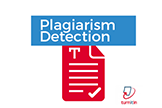Penentuan Tingkat-Tingkat Energi Vibrasi Molekul Hidrogen Pada Keadaan Elektronik Dasar Menggunakan Potensial Morse
Abstract
Pendekatan Born-Oppenheimer diterapkan untuk menghitung tingkat energi vibrasi keadaan dasar molekul hidrogen. Persamaan Schrodinger untuk inti atom diselesaikan dengan menggunakan metode semi-klasik, di mana inti atom diasumsikan bergerak secara klasik dalam sumur potensial dan energi vibrasi ditentukan dengan menerapkan aturan kuantisasi kuantum. Potensial yang digunakan pada penelitian adalah potensial Morse. Dalam penelitian ini, tingkat energi vibrasi dihitung dengan metode numerik, yaitu metode integrasi Simpson dan metode regula falsi. 15 Tingkat energi vibrasi dari molekul H2 diperoleh dan dibandingkan dengan data hasil eksperimen. Perbandingan ini mengindikasikan pendekatan yang digunakan pada penelitian ini memberikan hasil yang sangat akurat pada tingkat energi vibrasi yang relatif rendah (0≤n≤4), dengan kesalahan kurang dari 0,7%, dan untuk 5≤n≤8 dengan kesalahan maksimum 7,3%. Keakuratan menurun ketika tingkat energi vibrasi meningkat. Secara khusus, untuk n = 13 dan n = 14, kesalahan meningkat secara signifikan, menunjukkan gagalnya pendekatan ini untuk tingkat energi vibrasi yang relatif tinggi, khususnya untuk dua tingkat energi ini.
Born-Oppenheimer approximation was applied to calculate vibrational energy levels of ground state of Hydrogen molecule. The Schrodinger equation for the nuclei was solved using a semi-classical method, in which the nuclei are assumed to move classically in a potential well and the vibrational energies are determined by applying the quantum mechanical quantization rules. Potential used in this research was the Morse potential. Here, vibrational energy levels of the molecule were calculated using numerical methods, i.e. Simpson integration method and false position method. 15 Vibrational energy levels of the H2 molecule were obtained and compared to the corresponding results from experiments. The comparison indicated that the approximation used in this research yielded very accurate results for relatively low vibrational levels (0≤n≤4), with errors being less than 0.7% and for 5≤n≤8 with maximum of 7.3% errors. The accuracy decreased as the vibrational levels increased, as expected. In particular, for n=13 and n=14, errors significantly increased, indicating the breakdown of the approximation for relatively high vibrational levels, in particular for these two energy levels.
Keywords: Hydrogen Molecule; Morse Potential; Born-Oppenheimer Approximation; Simpson Method; False Position Method
Full Text:
PDF (Bahasa Indonesia)References
Kolos, W., dan Wolniewicz, L. (1968). Improved theoretical ground-state energy of the hydrogen molecule. The Journal of Chemical Physics, 49(1):404-410.
Kolos, W., dan Wolniewicz, L. (1964). Accurate adiabatic treatment of the ground state of the hydrogen molecule. The Journal of Chemical Physics, 41(12):3663-3673.
Kolos, W., dan Wolniewicz, L. (1965). Potential energy curves for the X 1∑g+, b3∑u+, and C 1∏u states of the hydrogen molecule. The Journal of Chemical Physics, 43(7):2429-2441.
Kolos, W., dan Wolniewicz, L. (1975). Improved potential energy curve and vibrational energies for the electronic ground state of the hydrogen molecule. Journal of molecular spectroscopy, 54(2):303-211.
Karl, G. (1994). Counting the number of vibrational states of a molecule to improve the Born-Oppenheimer estimate. Physical Review A, 49(2):799-802.
Kalinin, K. V. (2011). Calculation of hydrogen molecule energy levels using the moment constant summability method with specialized weight. Atmospheric and Oceanic Optics, 24(1):17-21.
Dickenson, G. D., Niu, M. L., Salumbides, E. J., Komasa, J., Eikema, K. S. E., Pachucki, K., dan Ubachs, W. (2013). Fundamental vibration of molecular hydrogen. Physical Review Letters, 110(19):193601.
Pachucki, K., dan Yerokhin, V. A. (2013). Application of the fully correlated basis of exponential functions for molecular hydrogen. Physical Review A, 87(6):062508.
Kadzielawa, A. P., Bielas, A., Acquarone, M., Biborski, A., Maska, M. M, dan Spalek, J. (2014). H2 and (H2)2 molecules with an ab initio optimization of wave functions in correlated state: electron-proton couplings and intermolecular microscopic parameters. New Journal of Physics, 16:123022.
Sprecher, D., Jungen, C., dan Merkt, F. (2014). Determination of the binding energies of the np Rydberg states of H2, HD, and D2 from high-resolution spectroscopic data by multichannel quantum-defect theory. The Journal of Chemical Physics, 140(10):104303.
Puchalski, M., dan Komasa, J. (2016). Complete a6m corrections to the ground state of H2. Physical Review Letters, 117(26):263002.
Morse, PM. (1929). Diatomic Molecules According to the Wave Mechanics II: Vibrational Levels. Physical Review, 34(1):57-64.
Fidiani, E. (2016). Modeling of diatomic molecule using the Morse potential and the Verlet algorithm. AIP Conference Proceedings, 1719:030001.
Filho, E. D., dan da Silva, J. F. (2019). Vibrational ground state energy for confined molecules. IOP Conf. Series: Journal of Physics, 1194:012029.
Walton, J. R., Rivera, L. A., Lucchese, R. R., dan Bevan, J. W. (2016). On the Morse, Lennard-Jones, and Kratzer Potentials: a canonical perspective with applications. The Journal of Physical Chemistry A, 120(42): 8347-8359.
Bransden, BH. dan Joachain, CJ. (2000). Quantum Mechanics. Prentice Hall.
Koonin, SE dan Meredith, DC. (1998). Computational Physics Fortran Version. Westview Press.
Radziq, AA., Smirnov, BM. (1985). Reference Data on Atoms, Molecules and Ions. Springer-Verlag: Berlin Heidelberg.
Barberio, E. (2012). Computational Physics Lecture Notes. Melbourne: The University of Melbourne.
DOI: https://doi.org/10.17509/wafi.v5i1.18614
Refbacks
- There are currently no refbacks.
Copyright (c) 2020 Wahana Fisika

This work is licensed under a Creative Commons Attribution-ShareAlike 4.0 International License.
Wahana Fisika e-ISSN : 2549-1989 (SK no. 0005.25491989/JI.3.1/SK.ISSN/2017.02 ) published by Physics Program , Universitas Pendidikan Indonesia Jl. Dr.Setiabudhi 229 Bandung. The journal is indexed by DOAJ (Directory of Open Access Journal) SINTA and Google Scholar. Contact: Here
 Lisensi : Creative Commons Attribution-ShareAlike 4.0 International License.
Lisensi : Creative Commons Attribution-ShareAlike 4.0 International License.







